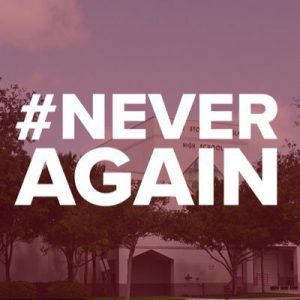

Welcome to this series of Democracy & Me posts based upon current events in our schools. We invite input from teachers, students and school districts about this post and other topics.
Seventeen lives were lost, hundreds of students and teachers experienced heartbreaking violence, and families stood with horror February 14, 2018 after a young man riddled Marjory Stoneman Douglas High School with gunfire. Throughout our nation, students, educators, and school administrations are grappling with how to respond to school and community violence.
The First Amendment to the Constitution of the United States of America states, “Congress shall make no law respecting an establishment of religion, or prohibiting the free speech thereof, or abridging the freedom of speech, or of the press; or the right of the people peaceably to assemble, and to petition the Government for a redress of grievances.”
- What are a student’s First Amendment rights?
- What are a school’s and school district’s rights to enforce its policies and rules in the event of a demonstration or protest?
First, let’s consider the many marches, protests, prayer services, and writing campaigns occurring today in our country. Students are speaking out and standing together to ask for tighter state and federal mental health supports, school safety, and gun control laws. One such march is #Enough; a National Walkout that happened today. Marches are also scheduled on March 24, 2018 and April 20, 2018. Women’s March Youth Empower, the lead sponsor for the March 14 march, created a toolkit for students, teachers, administrators and families to guide peaceful and effective demonstrations. https://www.womensmarch.com/empower/.
However, youth must also recognize that with exercising their free speech rights come consequences that participants must be willing to accept. Immediate response to the walkout by local school administrations has varied extensively. Local districts have identified a continuum of consequences for participating in walkout; some districts have scheduled approved activities, others will consider participation in a walkout as unexcused absences. Still other districts have threatened suspension or the most extreme potential consequence, expulsion/firing from the school for any students or teachers that walkout. See a list of local school districts’ plans at Cincinnati.com. https://www.cincinnati.com/videos/news/2018/02/21/why-one-simon-kenton-student-walked-out-neveragain/110686876/
High school students may be concerned about how participation might impact their college admissions. The National Association of College Admission Counseling (NACAC) has a limited listing of participating institutions and their public admission policy. https://www.nacacnet.org/news–publications/college-and-university-update-on-disciplinary-actions/ This is NOT a comprehensive listing. The best way to ensure proper information is to contact the admission office at each college the student is applying to and request a copy of their policies and practices.
What are the alternatives to a walkout? Teachers recognize how current events offer opportunities for truly relevant dialogue with their students about First Amendment rights. Classes are crafting letters to legislators, writing editorials for submission to media sources, and posting or sending messages of encouragement to those that have experienced school violence. How are you using this important moment to expand education about citizens’ rights, responsibilities and the consequences resulting from exercising the right to free speech?
The following resources offer lesson plans and guides to facilitating dialogue and understanding around difficult issues.
The Bill of Rights Institute: https://www.billofrightsinstitute.org
Constitutional Rights Foundation: http://crf-usa.org/
CivicsRenewalNetwork.org: www.civicsrenewalnetwork.org
National Council for the Social Studies: https://www.socialstudies.org
This post of Democracy & Me is the first of a series about youth voice, school safety, and interpretation of . Each segment will offer research, essential questions, and resources to help teachers facilitate the difficult conversations happening in middle and secondary schools across America.
Democracy and Me is supported by The Charles H. Dater Foundation.

Leave a Reply